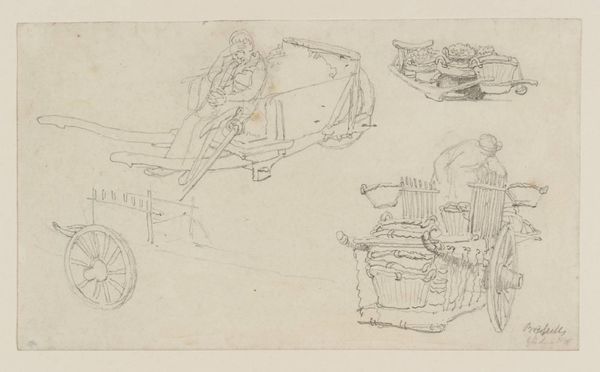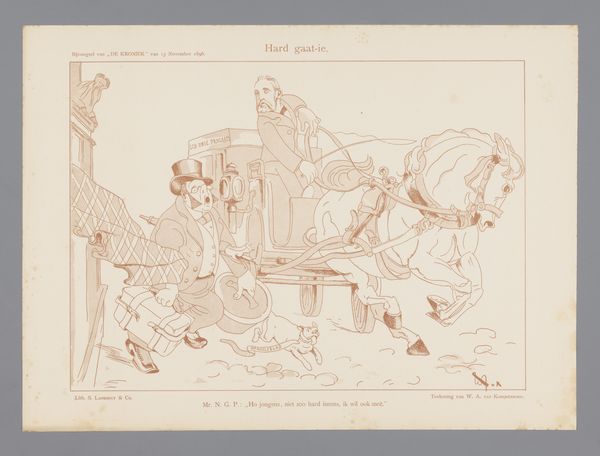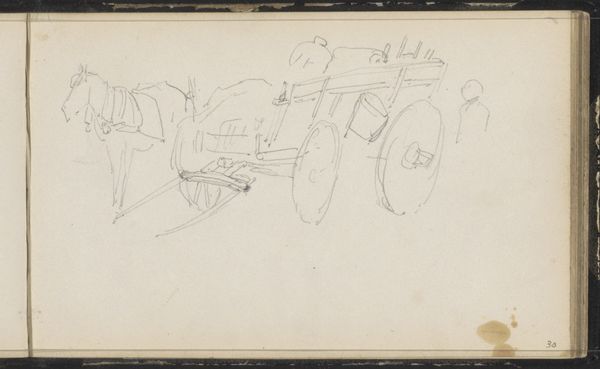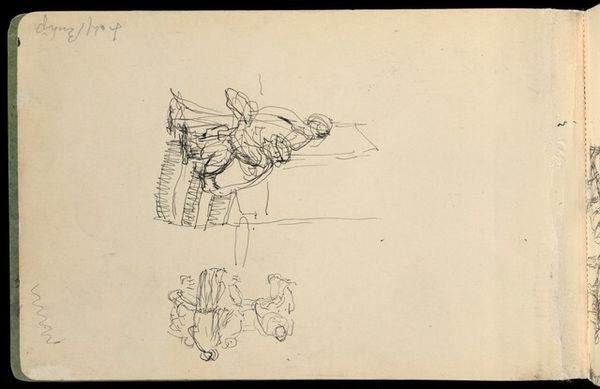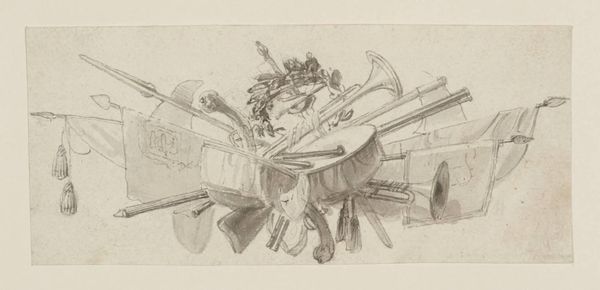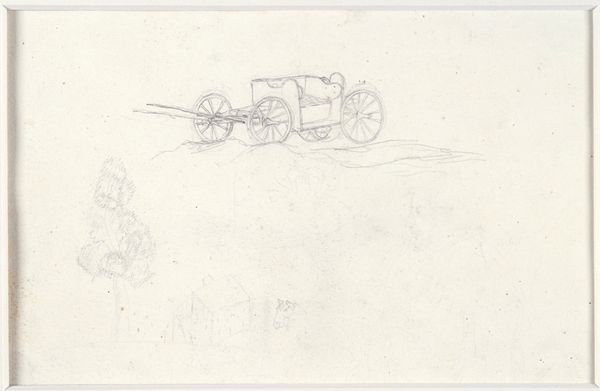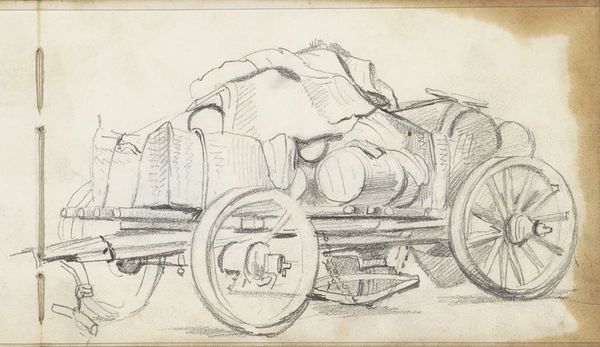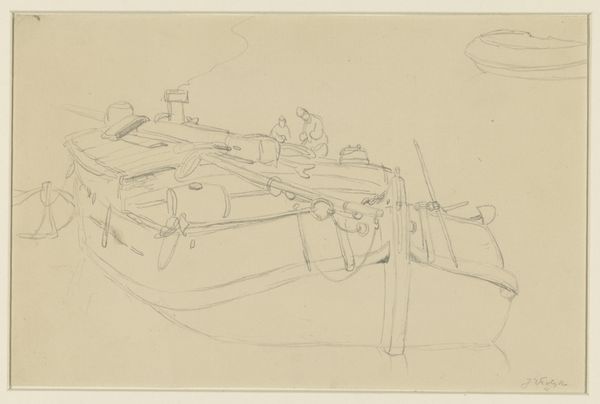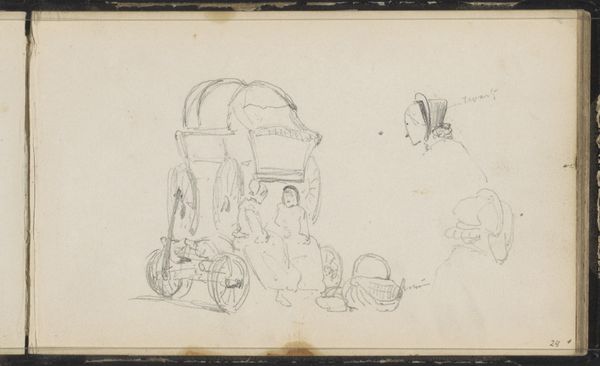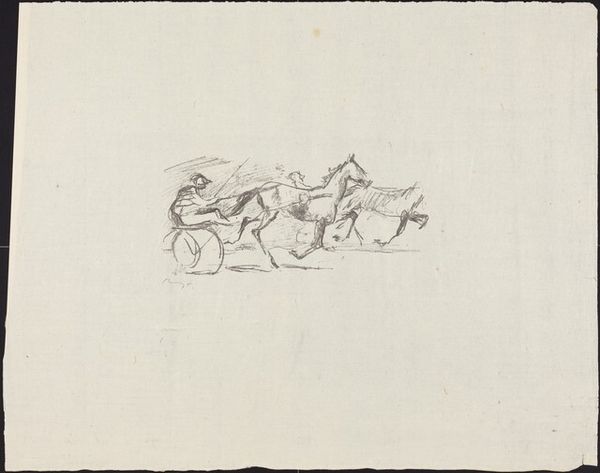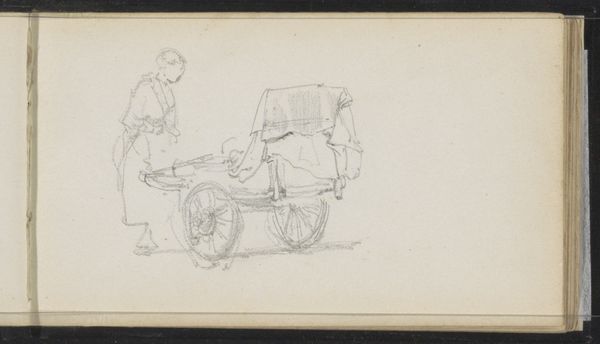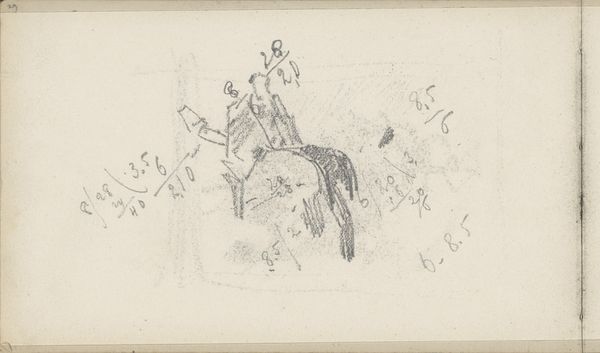
graphic-art, print, etching
#
graphic-art
#
narrative-art
#
dutch-golden-age
# print
#
etching
#
caricature
Dimensions: height 215 mm, width 275 mm
Copyright: Rijks Museum: Open Domain
Curator: This is a political cartoon titled "Spotprent", created in 1878 by Johan Michaël Schmidt Crans. It's an etching, a kind of printmaking offering incredibly detailed linework. Editor: Right off the bat, this strikes me as pure, unadulterated chaos, but the beautiful kind of chaos, like a visual flurry of activity. It's exciting and feels urgent. What is going on? Curator: It depicts a horse-drawn chariot race. The interesting twist, it symbolizes the economic competition between the Netherlands and the Dutch East Indies, modern Indonesia, the colonies and their colonizers, quite loaded indeed. Editor: Ah, I see it now, Netherlands drives one of the chariots, while the other is occupied by someone from Indie identifiable through the fancy headpiece. Look at how the lines capture movement, the horse is mid-gallop. The light feels… different from what you usually see. Curator: True. And the graphic quality emphasizes that, lending an interesting tension with the rather somber theme. Editor: The inscription at the bottom reads "Whether the Netherlands or India, the fastest lot will win”. I love how open to interpretation that is. Both economies depended so closely on one another. But I do get this very slight mocking feeling though, especially the "Nederlandsche harddraverij", you can tell that this print probably would be aimed toward citizens residing in Europe. Curator: It encapsulates the complexities and underlying contradictions of Dutch colonialism, so much that a single viewing may raise a question rather than make a point, as we seem to be implying a bit to much if we were to side with Netherlands or Indonesia here. This also ties back with Schmidt Cran's career as one of the primary cartoonists during this period of political turmoil in The Netherlands. Editor: Yes, I like that a lot. To capture all this in an etching? It makes you realize how relevant this kind of art can be for unpacking tricky politics. Thank you, this opened my eye again, back to those subtle connections between colonial pasts and presents, that are often times overlooked.
Comments
No comments
Be the first to comment and join the conversation on the ultimate creative platform.
